This is a continuation of a series of posts on the Nikon D850. The series starts here. You should be able to find all the posts about that camera in the Category List on the right sidebar, below the Articles widget. There’s a drop-down menu there that you can use to get to all the posts in this series; just look for “D850”
Yesterday, I showed you that, with the Sigma 135/1.8 Art, the AF Adjust setting on the D850 that gives the right average correction for an object on the lens axis (in the center of the finder), gives wildly wrong values when the subject is off axis. Today I’m going to tell you what happens when the Nikon 105 mm f/1.4E lens is put to the same test.
The setup, same as yesterday:
The LensAlign target is on the tripod in the distance, lit by two Westcott LED panels. The camera is mounted to a stand that allows easy up/down and left/right movement without major changes to the direction of the lens axis. The Nikon remote on the camera stand’s tray is used to minimize vibration. I use a 1-second shutter delay, too.
With the target in the center of the image, here are the results for the Adobe RGB green channel:
I forget to change something in the program, and the average line for f/1.4 didn’t get calculated. Sorry. The AF adjust value was set to +6 for all shots, which gives a pretty good result at f/1.4, but because of focus shift, the focal plane moves backward as the lens is stopped down, and the PDAF operation doesn’t fix this.
All three color channels:
You can see that this lens has substantially more longitudinal chromatic aberration (LoCA) than the Sigma 135.
With the target in the lower left of the image, at the same place where yesterday’s images were made:
There is about a 1 cm shift at f/1.4. That’s a whole lot less than with the Sigma 135, and I’d put it in the “don’t worry about it” category. There also appears to be less focus shift with aperture, which is a surprise to me.
All color channels:
There even is less LoCA.
There is something wrong with the way the camera and the Sigma 135 are interacting for off-axis PDAF. I don’t know what it is, but it’s just not working the way it should.
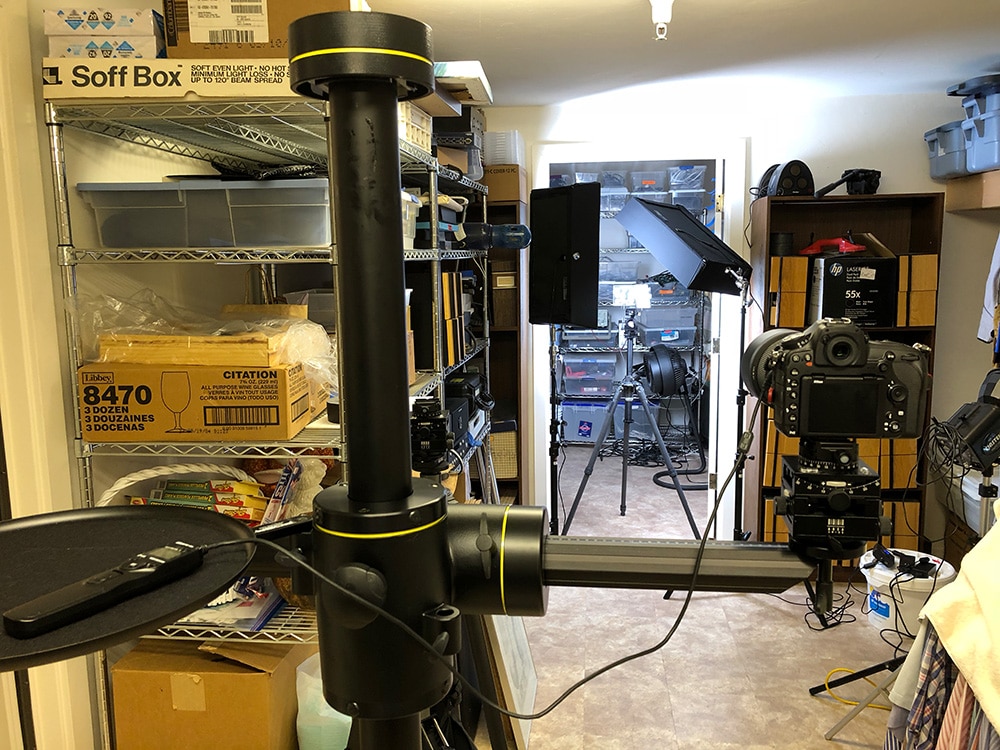
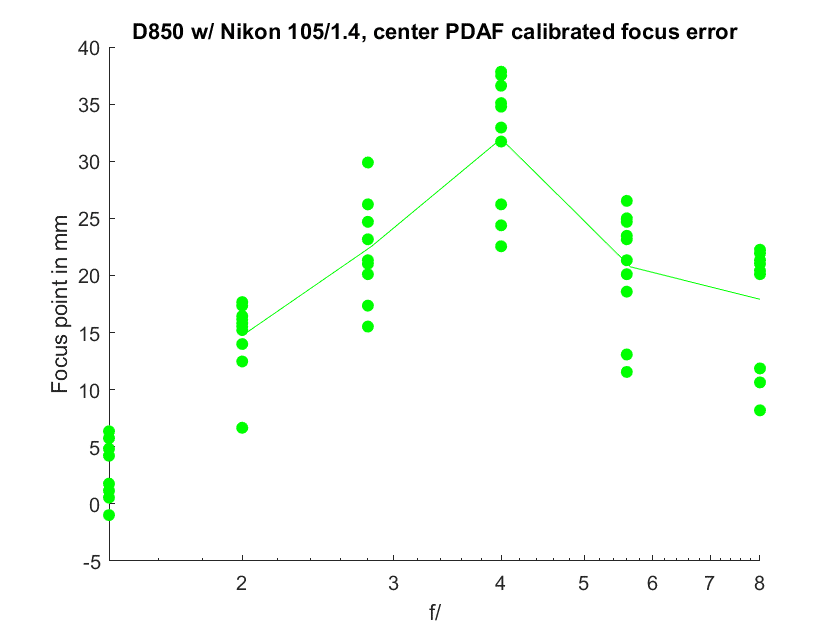
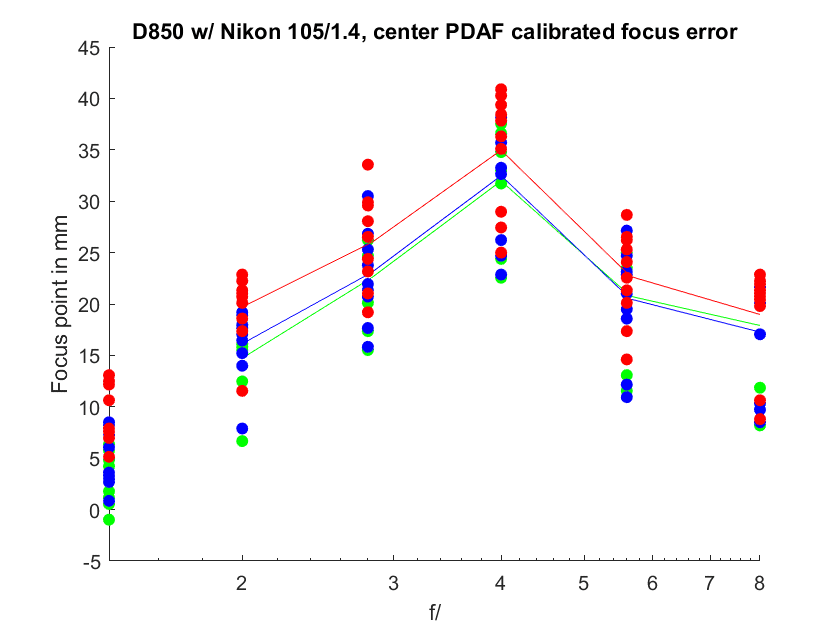
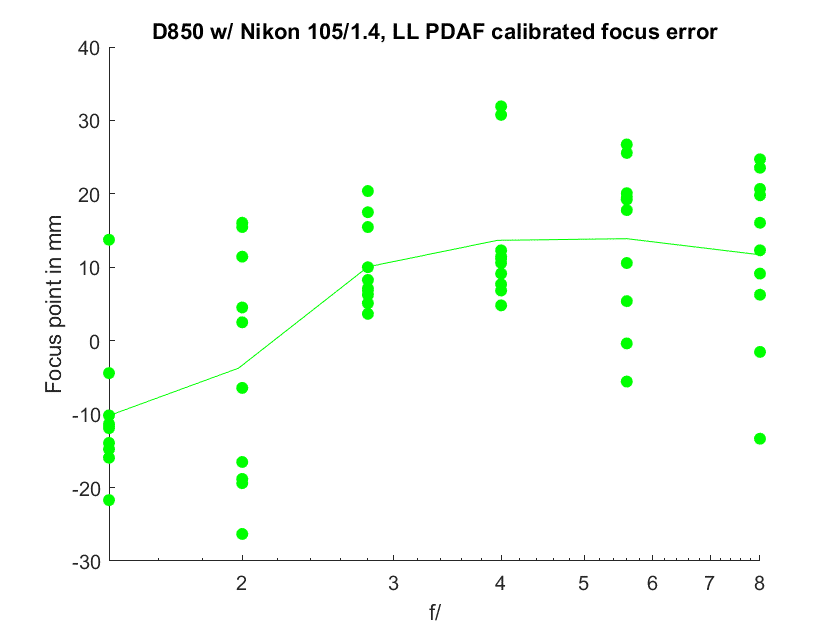
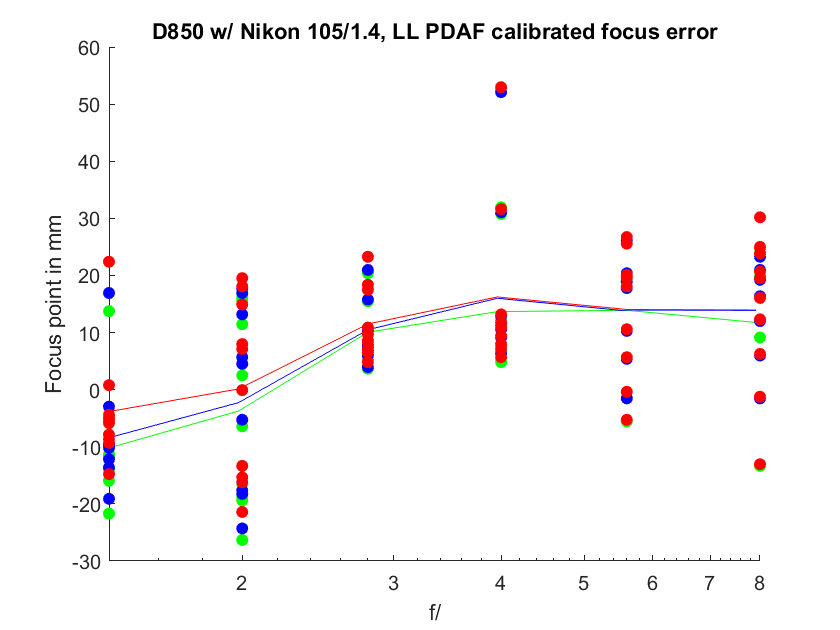
Leave a Reply